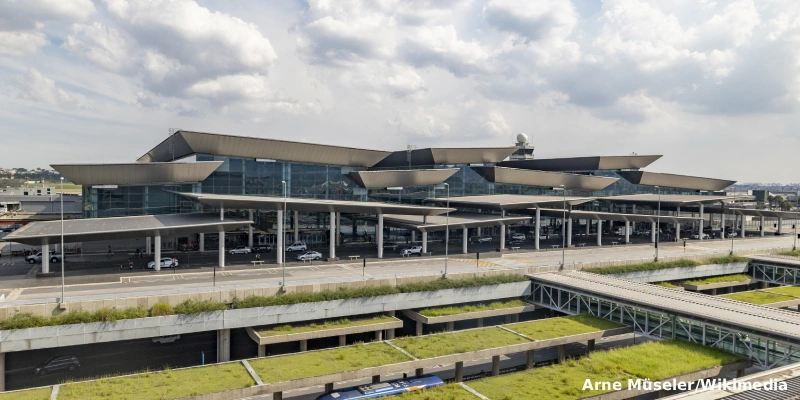The International Air Transport Association (IATA) published this Thursday the market performance data for air passengers in 2024, confirming that air travel demand has reached historic levels.
Overall Air Traffic Growth in 2024
Total traffic for the year (measured in revenue passenger kilometers, RPK) increased by 10.4% compared to 2023, surpassing pre-pandemic 2019 levels by 3.8%. Total capacity (measured in available seat kilometers, ASK) grew by 8.7%, reaching a record-high load factor of 83.5%.
Regarding international traffic, there was a 13.6% increase compared to 2023, while capacity grew by 12.8%. In the domestic segment, annual growth was 5.7%, with a capacity expansion of 2.5%.
December 2024 also closed with strong figures: demand increased by 8.6% year-over-year, while capacity grew by 5.6%. International traffic in December rose by 10.6%, and domestic traffic by 5.5%. The monthly load factor reached a record 84%.
→ IATA expects air transport in Latin America to generate 1.3 billion in profits in 2025
Outlook for 2025 and Key Challenges
IATA’s Director General, Willie Walsh, highlighted that the strong demand in 2024 demonstrates people’s desire to travel and the efficiency of airlines. However, he warned that in 2025, growth could moderate to 8%, aligning with historical averages. Additionally, Walsh emphasized two critical challenges:
Air Safety: The industry must remain focused on improving safety following recent incidents.
Sustainability: Despite record investments in Sustainable Aviation Fuel (SAF) in 2024, only 0.5% of the fuel used came from these sources. Greater investment and government support are required to increase SAF production and reduce costs.
Regional Analysis
International Passenger Markets
International traffic in 2024 surpassed 2019 levels by 0.5%, with improvements across all regions. Capacity was 0.9% lower than in 2019, while the load factor increased by 0.5 percentage points, reaching 83.2%.
Key Data by Region:
Asia-Pacific: 26.0% traffic growth, with a 24.7% capacity increase and an 83.8% load factor.
Europe: 9.7% traffic increase, 9.2% capacity growth, and an 84.1% load factor.
Middle East: 9.4% traffic growth, 8.4% capacity increase, and an 80.8% load factor.
North America: 6.8% traffic growth, 7.4% capacity increase, and a slight decline in load factor to 84.2%.
Latin America: 14.4% traffic increase, 14.3% capacity growth, and the highest load factor (84.8%).
Africa: 13.2% traffic growth, 9.5% capacity increase, and a 74.5% load factor, a record for the region.
Domestic Passenger Markets
Domestic traffic also reached record figures in 2024, with notable performances in:
China: 12.3% traffic growth, leading domestic markets.
Japan: 3.2% traffic expansion, despite a slight capacity contraction (-0.3%).
India: 86.4% load factor, the highest in domestic markets, despite a 0.6 percentage point decline.
The year 2024 was a record-breaking one for commercial aviation, with soaring demand and unprecedented operational efficiency. In 2025, moderate growth is expected, with key challenges in safety and sustainability. Airlines and governments must work together to ensure that the sector remains safe, efficient, and sustainable in the future.
Related Topics
São Paulo-Guarulhos Projects Investments of R$ 2.5 Billion by 2029 to Modernize Infrastructure
Madrid-Barajas Airport handled nearly 5.5 million passengers in November, a 3.9% increase
Air France to Open New VIP Lounge at London-Heathrow in 2026
BlueHouse: JetBlue to Open Its First VIP Lounge at New York’s JFK Airport

Un apasionado por la aviación, Fundador y CEO de Aviación al Día.




